Refine search
No keyword found to refine search
keywords EN
Places
Names
2042 documents found
| 1 | 35 |
Documents per page :

BLOCK CLIMBING IN FONTAINEBLEAU FOREST
Michael Bunel / Le Pictorium
LePictorium_0299973.jpg
Two brothers practice bouldering in the Fontainebleau forest. Bouldering involves climbing rocks less than 8 meters high without the assistance of a rope. Mattresses, called crashpads, placed on the ground protect against falls. A person can possibly be added to the device to prevent bad falls; we call him the spotter in climbing jargon. Fontainebleau is known worldwide for being the cradle of bouldering. The Fontainebleau forest massif welcomes 4 million climbing visitors each year. November 26, 2024. Fontainebleau. France.

BLOCK CLIMBING IN FONTAINEBLEAU FOREST
Michael Bunel / Le Pictorium
LePictorium_0299974.jpg
Two brothers practice bouldering in the Fontainebleau forest. Bouldering involves climbing rocks less than 8 meters high without the assistance of a rope. Mattresses, called crashpads, placed on the ground protect against falls. A person can possibly be added to the device to prevent bad falls; we call him the spotter in climbing jargon. Fontainebleau is known worldwide for being the cradle of bouldering. The Fontainebleau forest massif welcomes 4 million climbing visitors each year. November 26, 2024. Fontainebleau. France.

BLOCK CLIMBING IN FONTAINEBLEAU FOREST
Michael Bunel / Le Pictorium
LePictorium_0299975.jpg
Two brothers practice bouldering in the Fontainebleau forest. Bouldering involves climbing rocks less than 8 meters high without the assistance of a rope. Mattresses, called crashpads, placed on the ground protect against falls. A person can possibly be added to the device to prevent bad falls; we call him the spotter in climbing jargon. Fontainebleau is known worldwide for being the cradle of bouldering. The Fontainebleau forest massif welcomes 4 million climbing visitors each year. November 26, 2024. Fontainebleau. France.

BLOCK CLIMBING IN FONTAINEBLEAU FOREST
Michael Bunel / Le Pictorium
LePictorium_0299976.jpg
Two brothers practice bouldering in the Fontainebleau forest. Bouldering involves climbing rocks less than 8 meters high without the assistance of a rope. Mattresses, called crashpads, placed on the ground protect against falls. A person can possibly be added to the device to prevent bad falls; we call him the spotter in climbing jargon. Fontainebleau is known worldwide for being the cradle of bouldering. The Fontainebleau forest massif welcomes 4 million climbing visitors each year. November 26, 2024. Fontainebleau. France.

BLOCK CLIMBING IN FONTAINEBLEAU FOREST
Michael Bunel / Le Pictorium
LePictorium_0299977.jpg
Two brothers practice bouldering in the Fontainebleau forest. Bouldering involves climbing rocks less than 8 meters high without the assistance of a rope. Mattresses, called crashpads, placed on the ground protect against falls. A person can possibly be added to the device to prevent bad falls; we call him the spotter in climbing jargon. Fontainebleau is known worldwide for being the cradle of bouldering. The Fontainebleau forest massif welcomes 4 million climbing visitors each year. November 26, 2024. Fontainebleau. France.

BLOCK CLIMBING IN FONTAINEBLEAU FOREST
Michael Bunel / Le Pictorium
LePictorium_0299978.jpg
Two brothers practice bouldering in the Fontainebleau forest. Bouldering involves climbing rocks less than 8 meters high without the assistance of a rope. Mattresses, called crashpads, placed on the ground protect against falls. A person can possibly be added to the device to prevent bad falls; we call him the spotter in climbing jargon. Fontainebleau is known worldwide for being the cradle of bouldering. The Fontainebleau forest massif welcomes 4 million climbing visitors each year. November 26, 2024. Fontainebleau. France.

BLOCK CLIMBING IN FONTAINEBLEAU FOREST
Michael Bunel / Le Pictorium
LePictorium_0299979.jpg
Two brothers practice bouldering in the Fontainebleau forest. Bouldering involves climbing rocks less than 8 meters high without the assistance of a rope. Mattresses, called crashpads, placed on the ground protect against falls. A person can possibly be added to the device to prevent bad falls; we call him the spotter in climbing jargon. Fontainebleau is known worldwide for being the cradle of bouldering. The Fontainebleau forest massif welcomes 4 million climbing visitors each year. November 26, 2024. Fontainebleau. France.

BLOCK CLIMBING IN FONTAINEBLEAU FOREST
Michael Bunel / Le Pictorium
LePictorium_0299980.jpg
Two brothers practice bouldering in the Fontainebleau forest. Bouldering involves climbing rocks less than 8 meters high without the assistance of a rope. Mattresses, called crashpads, placed on the ground protect against falls. A person can possibly be added to the device to prevent bad falls; we call him the spotter in climbing jargon. Fontainebleau is known worldwide for being the cradle of bouldering. The Fontainebleau forest massif welcomes 4 million climbing visitors each year. November 26, 2024. Fontainebleau. France.

The village of Terjit in the heart of the Mauritanian Adrar
Nicolas Réméné / Le Pictorium
LePictorium_0299468.jpg
Village of Terjit in the Adrar region of Mauritania, July 11, 2024.
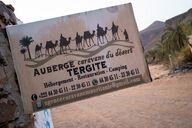
The village of Terjit in the heart of the Mauritanian Adrar
Nicolas Réméné / Le Pictorium
LePictorium_0299469.jpg
Inn in Terjit in the Adrar region of Mauritania, July 11, 2024.
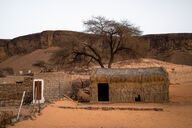
The village of Terjit in the heart of the Mauritanian Adrar
Nicolas Réméné / Le Pictorium
LePictorium_0299470.jpg
Village of Terjit in the Adrar region of Mauritania, July 11, 2024.
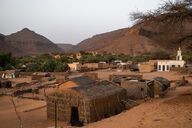
The village of Terjit in the heart of the Mauritanian Adrar
Nicolas Réméné / Le Pictorium
LePictorium_0299471.jpg
Village of Terjit in the Adrar region of Mauritania, July 11, 2024.
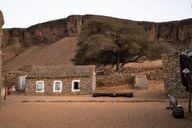
The village of Terjit in the heart of the Mauritanian Adrar
Nicolas Réméné / Le Pictorium
LePictorium_0299472.jpg
Village of Terjit in the Adrar region of Mauritania, July 11, 2024.
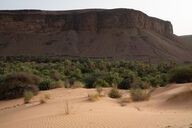
The village of Terjit in the heart of the Mauritanian Adrar
Nicolas Réméné / Le Pictorium
LePictorium_0299473.jpg
Village of Terjit in the Adrar region of Mauritania, July 11, 2024.
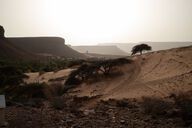
The village of Terjit in the heart of the Mauritanian Adrar
Nicolas Réméné / Le Pictorium
LePictorium_0299474.jpg
Village of Terjit in the Adrar region of Mauritania, July 11, 2024.
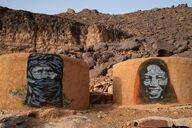
The village of Terjit in the heart of the Mauritanian Adrar
Nicolas Réméné / Le Pictorium
LePictorium_0299475.jpg
Tourist camp -Chez Jemal- in Terjit in the Adrar region in Mauritania, July 11, 2024.
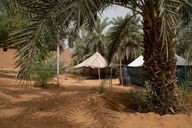
The village of Terjit in the heart of the Mauritanian Adrar
Nicolas Réméné / Le Pictorium
LePictorium_0299476.jpg
Tourist camp -Chez Jemal- in Terjit in the Adrar region in Mauritania, July 11, 2024.
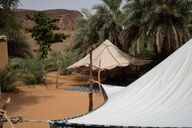
The village of Terjit in the heart of the Mauritanian Adrar
Nicolas Réméné / Le Pictorium
LePictorium_0299477.jpg
Tourist camp -Chez Jemal- in Terjit in the Adrar region in Mauritania, July 11, 2024.
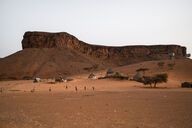
The village of Terjit in the heart of the Mauritanian Adrar
Nicolas Réméné / Le Pictorium
LePictorium_0299478.jpg
Village of Terjit in the Adrar region of Mauritania, July 11, 2024.
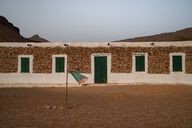
The village of Terjit in the heart of the Mauritanian Adrar
Nicolas Réméné / Le Pictorium
LePictorium_0299479.jpg
Terjit school in the Adrar region of Mauritania, July 7, 2024.
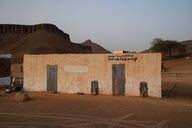
The village of Terjit in the heart of the Mauritanian Adrar
Nicolas Réméné / Le Pictorium
LePictorium_0299480.jpg
Terjit school in the Adrar region of Mauritania, July 7, 2024.
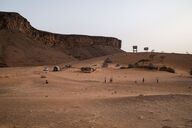
The village of Terjit in the heart of the Mauritanian Adrar
Nicolas Réméné / Le Pictorium
LePictorium_0299481.jpg
Village of Terjit in the Adrar region of Mauritania, July 11, 2024.
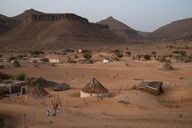
The village of Terjit in the heart of the Mauritanian Adrar
Nicolas Réméné / Le Pictorium
LePictorium_0299482.jpg
Village of Terjit in the Adrar region of Mauritania, July 11, 2024.
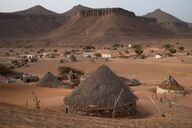
The village of Terjit in the heart of the Mauritanian Adrar
Nicolas Réméné / Le Pictorium
LePictorium_0299483.jpg
Village of Terjit in the Adrar region of Mauritania, July 11, 2024.
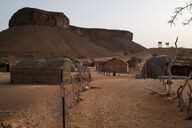
The village of Terjit in the heart of the Mauritanian Adrar
Nicolas Réméné / Le Pictorium
LePictorium_0299484.jpg
Village of Terjit in the Adrar region of Mauritania, July 11, 2024.
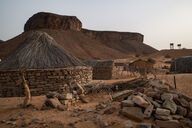
The village of Terjit in the heart of the Mauritanian Adrar
Nicolas Réméné / Le Pictorium
LePictorium_0299485.jpg
Village of Terjit in the Adrar region of Mauritania, July 11, 2024.
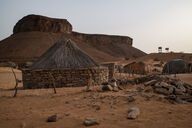
The village of Terjit in the heart of the Mauritanian Adrar
Nicolas Réméné / Le Pictorium
LePictorium_0299486.jpg
Village of Terjit in the Adrar region of Mauritania, July 11, 2024.
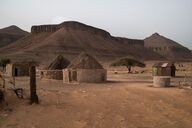
The village of Terjit in the heart of the Mauritanian Adrar
Nicolas Réméné / Le Pictorium
LePictorium_0299487.jpg
Village of Terjit in the Adrar region of Mauritania, July 11, 2024.
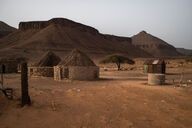
The village of Terjit in the heart of the Mauritanian Adrar
Nicolas Réméné / Le Pictorium
LePictorium_0299488.jpg
Village of Terjit in the Adrar region of Mauritania, July 11, 2024.
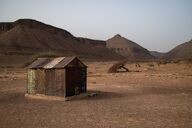
The village of Terjit in the heart of the Mauritanian Adrar
Nicolas Réméné / Le Pictorium
LePictorium_0299489.jpg
Village of Terjit in the Adrar region of Mauritania, July 11, 2024.
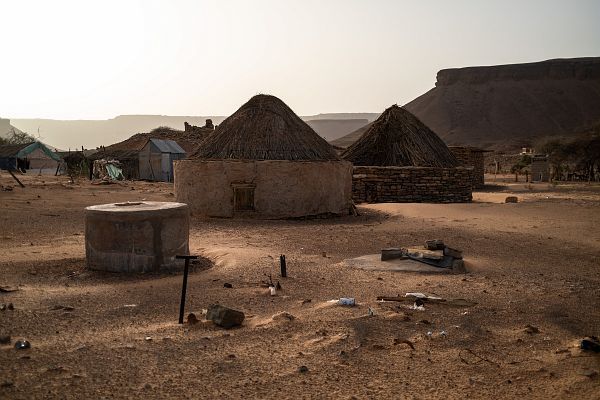
The village of Terjit in the heart of the Mauritanian Adrar
Nicolas Réméné / Le Pictorium
LePictorium_0299490.jpg
Village of Terjit in the Adrar region of Mauritania, July 11, 2024.
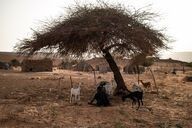
The village of Terjit in the heart of the Mauritanian Adrar
Nicolas Réméné / Le Pictorium
LePictorium_0299491.jpg
Village of Terjit in the Adrar region of Mauritania, July 11, 2024.
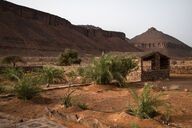
The village of Terjit in the heart of the Mauritanian Adrar
Nicolas Réméné / Le Pictorium
LePictorium_0299492.jpg
Village of Terjit in the Adrar region of Mauritania, July 11, 2024.
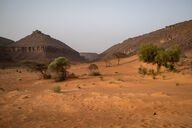
The village of Terjit in the heart of the Mauritanian Adrar
Nicolas Réméné / Le Pictorium
LePictorium_0299493.jpg
Village of Terjit in the Adrar region of Mauritania, July 11, 2024.
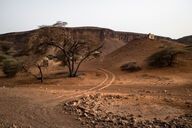
The village of Terjit in the heart of the Mauritanian Adrar
Nicolas Réméné / Le Pictorium
LePictorium_0299494.jpg
Village of Terjit in the Adrar region of Mauritania, July 11, 2024.
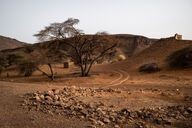
The village of Terjit in the heart of the Mauritanian Adrar
Nicolas Réméné / Le Pictorium
LePictorium_0299495.jpg
Village of Terjit in the Adrar region of Mauritania, July 11, 2024.
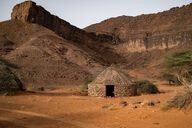
The village of Terjit in the heart of the Mauritanian Adrar
Nicolas Réméné / Le Pictorium
LePictorium_0299496.jpg
Village of Terjit in the Adrar region of Mauritania, July 11, 2024.
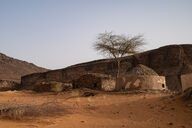
The village of Terjit in the heart of the Mauritanian Adrar
Nicolas Réméné / Le Pictorium
LePictorium_0299497.jpg
Village of Terjit in the Adrar region of Mauritania, July 11, 2024.
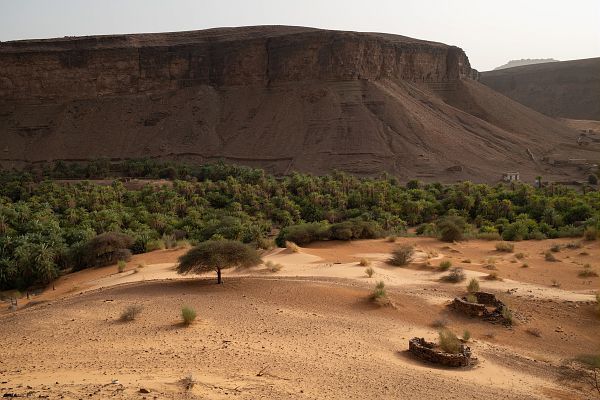
The village of Terjit in the heart of the Mauritanian Adrar
Nicolas Réméné / Le Pictorium
LePictorium_0299498.jpg
Village of Terjit in the Adrar region of Mauritania, July 11, 2024.
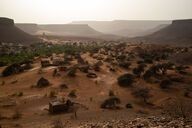
The village of Terjit in the heart of the Mauritanian Adrar
Nicolas Réméné / Le Pictorium
LePictorium_0299499.jpg
Village of Terjit in the Adrar region of Mauritania, July 11, 2024.
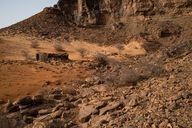
The village of Terjit in the heart of the Mauritanian Adrar
Nicolas Réméné / Le Pictorium
LePictorium_0299500.jpg
Village of Terjit in the Adrar region of Mauritania, July 11, 2024.
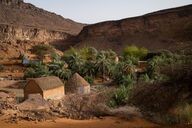
The village of Terjit in the heart of the Mauritanian Adrar
Nicolas Réméné / Le Pictorium
LePictorium_0299501.jpg
Village of Terjit in the Adrar region of Mauritania, July 11, 2024.
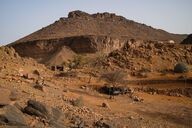
The village of Terjit in the heart of the Mauritanian Adrar
Nicolas Réméné / Le Pictorium
LePictorium_0299502.jpg
Village of Terjit in the Adrar region of Mauritania, July 11, 2024.
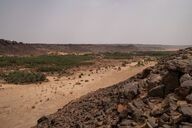
Mauritania: Oases and palm groves under threat
Nicolas Réméné / Le Pictorium
LePictorium_0299424.jpg
View of the palm grove of M'heiret in the Adrar region in Mauritania, July 8, 2024. Part of the oasis on the edge of the wadi in M'heiret has been devastated in recent years following the alternation extreme climatic episodes (drought and significant floods) leading to flooding and the death of numerous date palm trees. Introduced in Mauritania around the 7th AD, the date palm plays an important socio-economic role and its exploitation, in addition to promoting the development of a microclimate conducive to other crops, constitutes a significant source of income for the inhabitants. oases. Mauritania has 2.6 million palm trees and produces 24,000 tonnes of dates annually according to the latest figures from the Ministry of Agriculture. (July 2024). But phoeniciculture today faces many challenges, particularly linked to climate change. Indeed, Mauritanian palm groves are subject to various constraints directly threatening date palm cultivation. Among them, we find diseases, pests but also the aging of plantations, silting, salinization of the earth or even flooding due to successive floods of wadis.
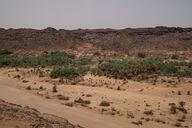
Mauritania: Oases and palm groves under threat
Nicolas Réméné / Le Pictorium
LePictorium_0299425.jpg
View of the palm grove of M'heiret in the Adrar region in Mauritania, July 8, 2024. Part of the oasis on the edge of the wadi in M'heiret has been devastated in recent years following the alternation extreme climatic episodes (drought and significant floods) leading to flooding and the death of numerous date palm trees. Introduced in Mauritania around the 7th AD, the date palm plays an important socio-economic role and its exploitation, in addition to promoting the development of a microclimate conducive to other crops, constitutes a significant source of income for the inhabitants. oases. Mauritania has 2.6 million palm trees and produces 24,000 tonnes of dates annually according to the latest figures from the Ministry of Agriculture. (July 2024). But phoeniciculture today faces many challenges, particularly linked to climate change. Indeed, Mauritanian palm groves are subject to various constraints directly threatening date palm cultivation. Among them, we find diseases, pests but also the aging of plantations, silting, salinization of the earth or even flooding due to successive floods of wadis.
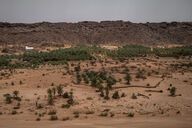
Mauritania: Oases and palm groves under threat
Nicolas Réméné / Le Pictorium
LePictorium_0299426.jpg
View of the palm grove of M'heiret in the Adrar region in Mauritania, July 8, 2024. Part of the oasis on the edge of the wadi in M'heiret has been devastated in recent years following the alternation extreme climatic episodes (drought and significant floods) leading to flooding and the death of numerous date palm trees. Introduced in Mauritania around the 7th AD, the date palm plays an important socio-economic role and its exploitation, in addition to promoting the development of a microclimate conducive to other crops, constitutes a significant source of income for the inhabitants. oases. Mauritania has 2.6 million palm trees and produces 24,000 tonnes of dates annually according to the latest figures from the Ministry of Agriculture. (July 2024). But phoeniciculture today faces many challenges, particularly linked to climate change. Indeed, Mauritanian palm groves are subject to various constraints directly threatening date palm cultivation. Among them, we find diseases, pests but also the aging of plantations, silting, salinization of the earth or even flooding due to successive floods of wadis.

Mauritania: Oases and palm groves under threat
Nicolas Réméné / Le Pictorium
LePictorium_0299427.jpg
View of the palm grove of M'heiret in the Adrar region in Mauritania, July 8, 2024. Part of the oasis on the edge of the wadi in M'heiret has been devastated in recent years following the alternation extreme climatic episodes (drought and significant floods) leading to flooding and the death of numerous date palm trees. Introduced in Mauritania around the 7th AD, the date palm plays an important socio-economic role and its exploitation, in addition to promoting the development of a microclimate conducive to other crops, constitutes a significant source of income for the inhabitants. oases. Mauritania has 2.6 million palm trees and produces 24,000 tonnes of dates annually according to the latest figures from the Ministry of Agriculture. (July 2024). But phoeniciculture today faces many challenges, particularly linked to climate change. Indeed, Mauritanian palm groves are subject to various constraints directly threatening date palm cultivation. Among them, we find diseases, pests but also the aging of plantations, silting, salinization of the earth or even flooding due to successive floods of wadis.
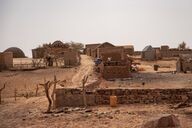
Mauritania: Oases and palm groves under threat
Nicolas Réméné / Le Pictorium
LePictorium_0299428.jpg
The village of M'heiret in the Adrar region in Mauritania, July 8, 2024. Part of the oasis on the edge of the wadi in M'heiret has been devastated in recent years following the alternation of Extreme climatic episodes (drought and significant floods) leading to flooding and the death of numerous date palm trees. Introduced in Mauritania around the 7th AD, the date palm plays an important socio-economic role and its exploitation, in addition to promoting the development of a microclimate conducive to other crops, constitutes a significant source of income for the inhabitants. oases. Mauritania has 2.6 million palm trees and produces 24,000 tonnes of dates annually according to the latest figures from the Ministry of Agriculture. (July 2024). But phoeniciculture today faces many challenges, particularly linked to climate change. Indeed, Mauritanian palm groves are subject to various constraints directly threatening date palm cultivation. Among them, we find diseases, pests but also the aging of plantations, silting, salinization of the earth or even flooding due to successive floods of wadis.
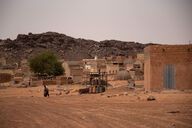
Mauritania: Oases and palm groves under threat
Nicolas Réméné / Le Pictorium
LePictorium_0299429.jpg
The village of M'heiret in the Adrar region in Mauritania, July 8, 2024. Part of the oasis on the edge of the wadi in M'heiret has been devastated in recent years following the alternation of Extreme climatic episodes (drought and significant floods) leading to flooding and the death of numerous date palm trees. Introduced in Mauritania around the 7th AD, the date palm plays an important socio-economic role and its exploitation, in addition to promoting the development of a microclimate conducive to other crops, constitutes a significant source of income for the inhabitants. oases. Mauritania has 2.6 million palm trees and produces 24,000 tonnes of dates annually according to the latest figures from the Ministry of Agriculture. (July 2024). But phoeniciculture today faces many challenges, particularly linked to climate change. Indeed, Mauritanian palm groves are subject to various constraints directly threatening date palm cultivation. Among them, we find diseases, pests but also the aging of plantations, silting, salinization of the earth or even flooding due to successive floods of wadis.
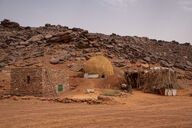
Mauritania: Oases and palm groves under threat
Nicolas Réméné / Le Pictorium
LePictorium_0299430.jpg
The village of M'heiret in the Adrar region of Mauritania, July 8, 2024.
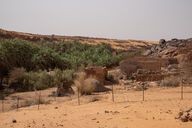
Mauritania: Oases and palm groves under threat
Nicolas Réméné / Le Pictorium
LePictorium_0299431.jpg
The M'heiret oasis in the Adrar region of Mauritania on July 8, 2024. Part of the oasis on the edge of the wadi in M'heiret has been devastated in recent years following the alternation of Extreme climatic episodes (drought and significant floods) leading to flooding and the death of numerous date palm trees. Introduced in Mauritania around the 7th AD, the date palm plays an important socio-economic role and its exploitation, in addition to promoting the development of a microclimate conducive to other crops, constitutes a significant source of income for the inhabitants. oases. Mauritania has 2.6 million palm trees and produces 24,000 tonnes of dates annually according to the latest figures from the Ministry of Agriculture. (July 2024). But phoeniciculture today faces many challenges, particularly linked to climate change. Indeed, Mauritanian palm groves are subject to various constraints directly threatening date palm cultivation. Among them, we find diseases, pests but also the aging of plantations, silting, salinization of the earth or even flooding due to successive floods of wadis.
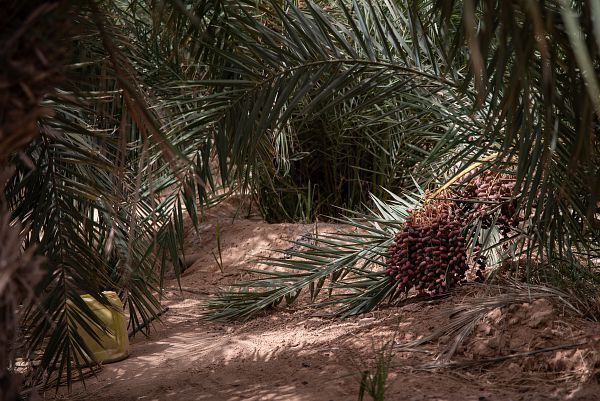
Mauritania: Oases and palm groves under threat
Nicolas Réméné / Le Pictorium
LePictorium_0299432.jpg
The M'heiret oasis in the Adrar region of Mauritania on July 8, 2024. Part of the oasis on the edge of the wadi in M'heiret has been devastated in recent years following the alternation of Extreme climatic episodes (drought and significant floods) leading to flooding and the death of numerous date palm trees. Introduced in Mauritania around the 7th AD, the date palm plays an important socio-economic role and its exploitation, in addition to promoting the development of a microclimate conducive to other crops, constitutes a significant source of income for the inhabitants. oases. Mauritania has 2.6 million palm trees and produces 24,000 tonnes of dates annually according to the latest figures from the Ministry of Agriculture. (July 2024). But phoeniciculture today faces many challenges, particularly linked to climate change. Indeed, Mauritanian palm groves are subject to various constraints directly threatening date palm cultivation. Among them, we find diseases, pests but also the aging of plantations, silting, salinization of the earth or even flooding due to successive floods of wadis.
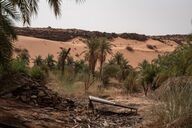
Mauritania: Oases and palm groves under threat
Nicolas Réméné / Le Pictorium
LePictorium_0299433.jpg
The M'heiret oasis in the Adrar region of Mauritania on July 8, 2024. Part of the oasis on the edge of the wadi in M'heiret has been devastated in recent years following the alternation of Extreme climatic episodes (drought and significant floods) leading to flooding and the death of numerous date palm trees. Introduced in Mauritania around the 7th AD, the date palm plays an important socio-economic role and its exploitation, in addition to promoting the development of a microclimate conducive to other crops, constitutes a significant source of income for the inhabitants. oases. Mauritania has 2.6 million palm trees and produces 24,000 tonnes of dates annually according to the latest figures from the Ministry of Agriculture. (July 2024). But phoeniciculture today faces many challenges, particularly linked to climate change. Indeed, Mauritanian palm groves are subject to various constraints directly threatening date palm cultivation. Among them, we find diseases, pests but also the aging of plantations, silting, salinization of the earth or even flooding due to successive floods of wadis.
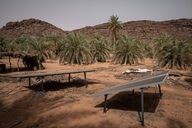
Mauritania: Oases and palm groves under threat
Nicolas Réméné / Le Pictorium
LePictorium_0299434.jpg
The M'heiret oasis in the Adrar region of Mauritania on July 8, 2024. Part of the oasis on the edge of the wadi in M'heiret has been devastated in recent years following the alternation of Extreme climatic episodes (drought and significant floods) leading to flooding and the death of numerous date palm trees. Introduced in Mauritania around the 7th AD, the date palm plays an important socio-economic role and its exploitation, in addition to promoting the development of a microclimate conducive to other crops, constitutes a significant source of income for the inhabitants. oases. Mauritania has 2.6 million palm trees and produces 24,000 tonnes of dates annually according to the latest figures from the Ministry of Agriculture. (July 2024). But phoeniciculture today faces many challenges, particularly linked to climate change. Indeed, Mauritanian palm groves are subject to various constraints directly threatening date palm cultivation. Among them, we find diseases, pests but also the aging of plantations, silting, salinization of the earth or even flooding due to successive floods of wadis.
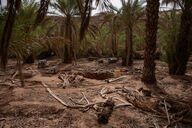
Mauritania: Oases and palm groves under threat
Nicolas Réméné / Le Pictorium
LePictorium_0299435.jpg
The M'heiret oasis in the Adrar region of Mauritania on July 8, 2024. Part of the oasis on the edge of the wadi in M'heiret has been devastated in recent years following the alternation of Extreme climatic episodes (drought and significant floods) leading to flooding and the death of numerous date palm trees. Introduced in Mauritania around the 7th AD, the date palm plays an important socio-economic role and its exploitation, in addition to promoting the development of a microclimate conducive to other crops, constitutes a significant source of income for the inhabitants. oases. Mauritania has 2.6 million palm trees and produces 24,000 tonnes of dates annually according to the latest figures from the Ministry of Agriculture. (July 2024). But phoeniciculture today faces many challenges, particularly linked to climate change. Indeed, Mauritanian palm groves are subject to various constraints directly threatening date palm cultivation. Among them, we find diseases, pests but also the aging of plantations, silting, salinization of the earth or even flooding due to successive floods of wadis.
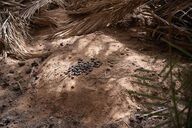
Mauritania: Oases and palm groves under threat
Nicolas Réméné / Le Pictorium
LePictorium_0299436.jpg
The M'heiret oasis in the Adrar region of Mauritania on July 8, 2024. Part of the oasis on the edge of the wadi in M'heiret has been devastated in recent years following the alternation of Extreme climatic episodes (drought and significant floods) leading to flooding and the death of numerous date palm trees. Introduced in Mauritania around the 7th AD, the date palm plays an important socio-economic role and its exploitation, in addition to promoting the development of a microclimate conducive to other crops, constitutes a significant source of income for the inhabitants. oases. Mauritania has 2.6 million palm trees and produces 24,000 tonnes of dates annually according to the latest figures from the Ministry of Agriculture. (July 2024). But phoeniciculture today faces many challenges, particularly linked to climate change. Indeed, Mauritanian palm groves are subject to various constraints directly threatening date palm cultivation. Among them, we find diseases, pests but also the aging of plantations, silting, salinization of the earth or even flooding due to successive floods of wadis.
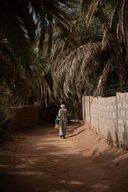
Mauritania: Oases and palm groves under threat
Nicolas Réméné / Le Pictorium
LePictorium_0299437.jpg
The M'heiret oasis in the Adrar region of Mauritania on July 8, 2024. Part of the oasis on the edge of the wadi in M'heiret has been devastated in recent years following the alternation of Extreme climatic episodes (drought and significant floods) leading to flooding and the death of numerous date palm trees. Introduced in Mauritania around the 7th AD, the date palm plays an important socio-economic role and its exploitation, in addition to promoting the development of a microclimate conducive to other crops, constitutes a significant source of income for the inhabitants. oases. Mauritania has 2.6 million palm trees and produces 24,000 tonnes of dates annually according to the latest figures from the Ministry of Agriculture. (July 2024). But phoeniciculture today faces many challenges, particularly linked to climate change. Indeed, Mauritanian palm groves are subject to various constraints directly threatening date palm cultivation. Among them, we find diseases, pests but also the aging of plantations, silting, salinization of the earth or even flooding due to successive floods of wadis.
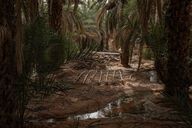
Mauritania: Oases and palm groves under threat
Nicolas Réméné / Le Pictorium
LePictorium_0299438.jpg
The M'heiret oasis in the Adrar region of Mauritania on July 8, 2024. Part of the oasis on the edge of the wadi in M'heiret has been devastated in recent years following the alternation of Extreme climatic episodes (drought and significant floods) leading to flooding and the death of numerous date palm trees. Introduced in Mauritania around the 7th AD, the date palm plays an important socio-economic role and its exploitation, in addition to promoting the development of a microclimate conducive to other crops, constitutes a significant source of income for the inhabitants. oases. Mauritania has 2.6 million palm trees and produces 24,000 tonnes of dates annually according to the latest figures from the Ministry of Agriculture. (July 2024). But phoeniciculture today faces many challenges, particularly linked to climate change. Indeed, Mauritanian palm groves are subject to various constraints directly threatening date palm cultivation. Among them, we find diseases, pests but also the aging of plantations, silting, salinization of the earth or even flooding due to successive floods of wadis.
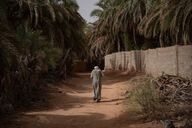
Mauritania: Oases and palm groves under threat
Nicolas Réméné / Le Pictorium
LePictorium_0299439.jpg
The M'heiret oasis in the Adrar region of Mauritania on July 8, 2024. Part of the oasis on the edge of the wadi in M'heiret has been devastated in recent years following the alternation of Extreme climatic episodes (drought and significant floods) leading to flooding and the death of numerous date palm trees. Introduced in Mauritania around the 7th AD, the date palm plays an important socio-economic role and its exploitation, in addition to promoting the development of a microclimate conducive to other crops, constitutes a significant source of income for the inhabitants. oases. Mauritania has 2.6 million palm trees and produces 24,000 tonnes of dates annually according to the latest figures from the Ministry of Agriculture. (July 2024). But phoeniciculture today faces many challenges, particularly linked to climate change. Indeed, Mauritanian palm groves are subject to various constraints directly threatening date palm cultivation. Among them, we find diseases, pests but also the aging of plantations, silting, salinization of the earth or even flooding due to successive floods of wadis.
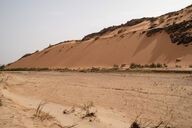
Mauritania: Oases and palm groves under threat
Nicolas Réméné / Le Pictorium
LePictorium_0299440.jpg
Passage of the dry wadi at this time of year in M'heiret in the Adrar region in Mauritania on July 8, 2024. Part of the oasis on the edge of the wadi in M'heiret was devastated in recent years following the alternation of extreme climatic episodes (drought and significant floods) leading to flooding and the death of numerous date palms. Introduced in Mauritania around the 7th AD, the date palm plays an important socio-economic role and its exploitation, in addition to promoting the development of a microclimate conducive to other crops, constitutes a significant source of income for the inhabitants. oases. Mauritania has 2.6 million palm trees and produces 24,000 tonnes of dates annually according to the latest figures from the Ministry of Agriculture. (July 2024). But phoeniciculture today faces many challenges, particularly linked to climate change. Indeed, Mauritanian palm groves are subject to various constraints directly threatening date palm cultivation. Among them, we find diseases, pests but also the aging of plantations, silting, salinization of the earth or even flooding due to successive floods of wadis.
Next page
